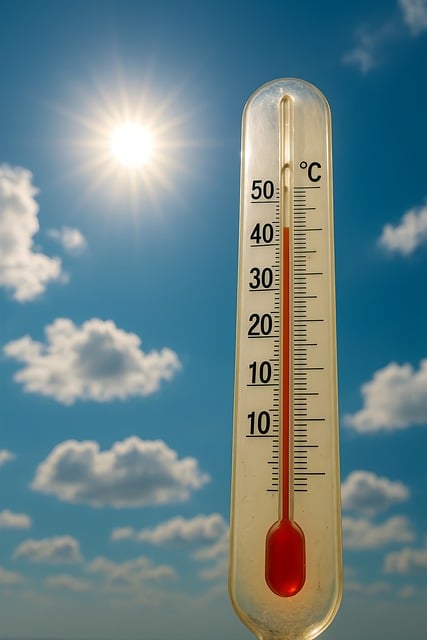
Image by Schiphol Wind from Pixabay
The opinions in this post do not constitute safety advice. You should always follow manufacturers’ guidelines and regularly check tyre pressures.
As we write this, the UK is just recovering from another Summer heatwave, with the possibility of more before Autumn kicks in. And if not this year, then you can bet your boots they will be back next year – not even Scandinavia escapes the Summer heat now.
What do heatwaves mean for your tyres? We spotted an article in The Express that made the effects sound extreme:
Experts at DiscoverCars.com have shared a number of tips for drivers using their cars this week. They explained that tyre pressure can significantly change during hot weather.
Tyres can overinflate due to the expansion of air inside them, which could lead to excessive wear or even a blowout, they warned.
They say that it is crucial to monitor your tyre pressure during a heatwave to ensure the safety of your vehicle. Before long trips, make sure your tyres are properly inflated.
Now, don’t get us wrong. Every driver should be checking their tyre pressures regularly, and particularly before a long car journey. But does a heatwave make this more compelling? Just how much do heatwaves increase your tyres’ pressure?
Rather than trust the various figures flying around the internet, we decided to check it ourselves.
Breaking out the school-level Physics
The equation telling us how tyre pressure changes with temperature couldn’t be simpler. Here we go:
P2 = P1 x T2/T1
(P1 is the tyre pressure at temperature T1, P2 is the tyre pressure at temperature T2).
If you’re at all maths-y, you’ll immediately spot that doubling the temperature means doubling the pressure.
At first sight, that looks terrifying for car owners. Doesn’t that mean that if you inflate your tyres at 15 C, they will be running double the pressure once it gets to 30C?
Nope – because temperature in this equation has to be measured in degrees Kelvin (K), not Centigrade. And that changes things a lot.
Converting between the two is dead easy – to get to Kelvin, you just add 273.15 to the Centigrade figure.
Armed with that, let’s do a sample real-world calculation.
We’re off on a Honda holiday
You’re about to set off on your hols in your bog-standard family hatchback. For the sake of argument, we’ve picked a ten-year-old Honda Civic, running 225/45Y17 front tyres.
You measured the tyre pressure one day before when it was a balmy 20 C, and the front ones were at the recommended 2.2 Bar (31.9 PSI). But now the temperatures has soared to 30 C. What are the pressures now?
OK, so 20C is 293.15 K and 35C is 303.15 K
P2 = 2.2 X 293.15/303.15
P2 = 2.2779 BAR = 33 PSI
For that ten degree rise in temperature, your tyre pressures have gone up by a less-than-whopping 1.1 PSI.
Temperature matters… but let’s get it in proportion
It would be bonkers to say that temperature doesn’t matter at all when thinking about your tyre pressure. It would be crazy, for example, to set your tyre pressure in January and then not readjust before your 40C European road trip. That could result in a really significant 15% increase in your tyre pressure (plus you wouldn’t have checked your tyres for months!).
For smaller jumps in temperature (like in our Honda holiday example), obviously it’s not ideal to be running over the recommended pressures. As The Express article points out, over-inflated tyres wear faster and more prone to blowouts. But whether a 1.1 PSI increase is that significant, we’ll leave you to judge.
Maybe the main point of their article was just to be vigilant about tyre pressures, which is fair enough, and something everyone should be doing anyway.
The BK Tyres blog carries news, views and information on tyres and driving. BK Tyres supplies and fits tyres throughout South Oxfordshire, including the communities of Abingdon, Didcot and Henley on Thames. As an independent, family run mobile provider, we provide exceptional levels of service and affordable prices. Contact us today.
